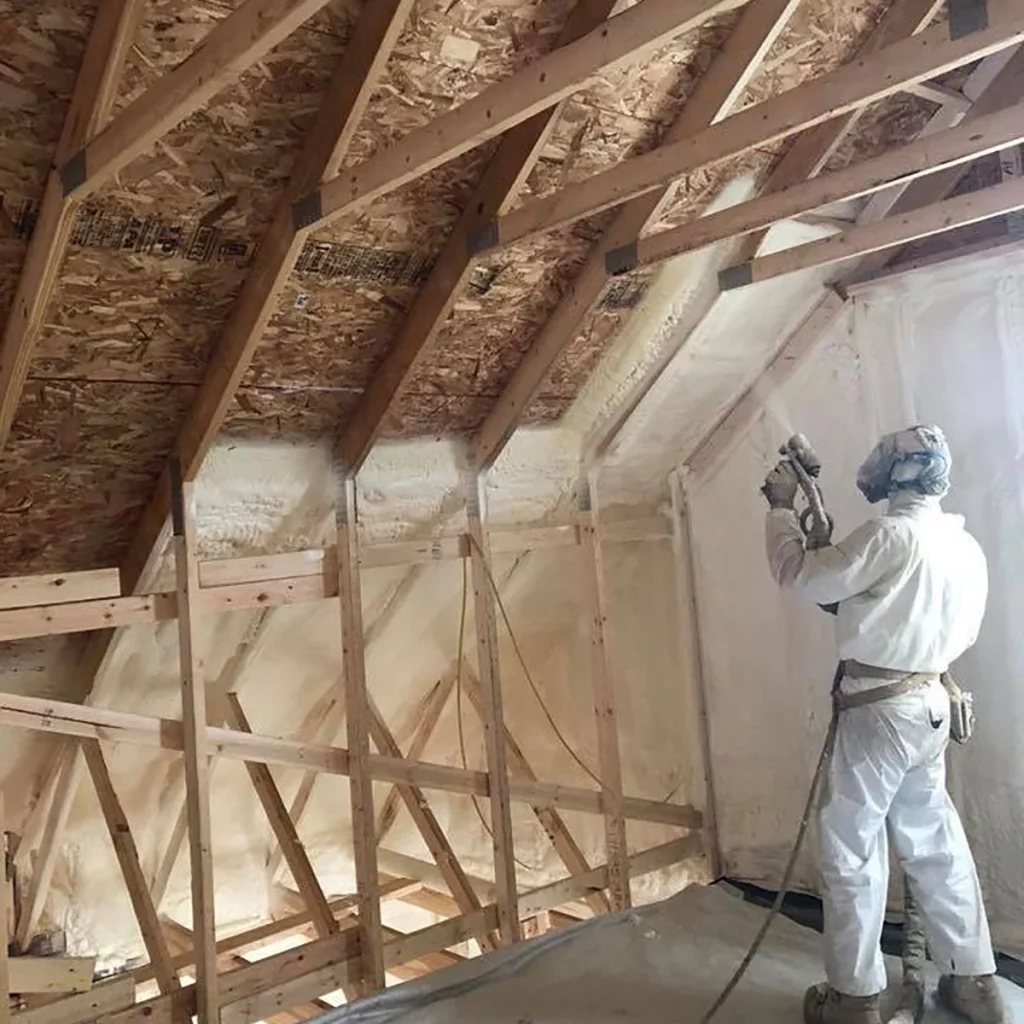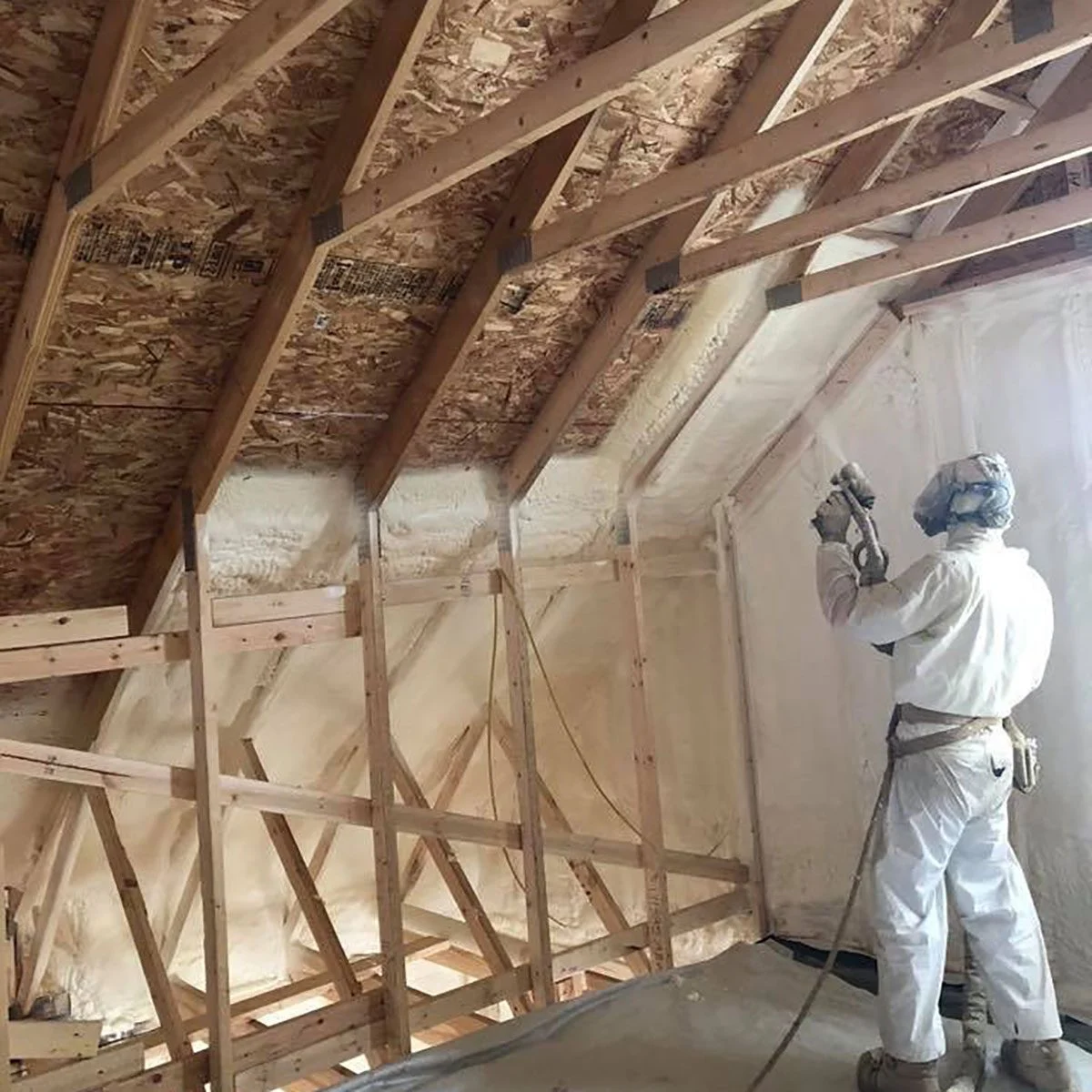If you’re looking for a way to improve the insulation in your attic, spray foam is a great option. Spray foam is a type of insulation that is applied as a liquid and expands to fill all the nooks and crannies in your attic. This can help to seal up air leaks and improve energy efficiency.
One of the most common questions about spray foam is whether it can be applied to attic ceilings. The answer is yes, spray foam can be applied to attic ceilings. In fact, it is one of the most effective ways to insulate an attic ceiling.

Can Spray Foam Be Applied to Attic Ceilings?
Yes, spray foam can be applied to attic ceilings. In fact, it is one of the most effective ways to insulate an attic ceiling. Spray foam is a versatile insulation that can be applied to a variety of surfaces, including ceilings, walls, and floors.
Benefits of Spray Foam Attic Ceilings
There are many benefits to using spray foam for attic ceilings. Some of the benefits include:
- Improved energy efficiency: Spray foam can help to seal up air leaks and improve energy efficiency. This can save you money on your energy bills.
- Reduced noise levels: Spray foam can help to reduce noise levels in your home. This can make your home more comfortable and peaceful.
- Improved comfort: Spray foam can help to keep your home cooler in the summer and warmer in the winter. This can make your home more comfortable to live in.
How to Apply Spray Foam to Attic Ceilings
Applying spray foam to attic ceilings is a job that is best left to a professional. A professional will have the experience and expertise to apply the foam correctly.
The process of applying spray foam to attic ceilings typically involves the following steps:
- Preparing the attic: The attic will need to be cleaned and cleared of any debris.
- Installing baffles: Baffles are installed to help prevent the foam from blocking the soffit vents.
- Applying the foam: The foam is applied using a special sprayer.
- Finishing the job: Once the foam has cured, the attic can be cleaned up.
Cost of Spray Foam Attic Ceilings
The cost of spray foam attic ceilings varies depending on the size of the attic and the type of foam that is used. In general, spray foam attic ceilings are more expensive than other types of insulation.
Conclusion
If you’re looking for a way to improve the insulation in your attic, spray foam is a great option. Spray foam can be applied to attic ceilings and offers a number of benefits, including improved energy efficiency, reduced noise levels, and improved comfort.
Additional Information
- Spray foam is a type of insulation that is applied as a liquid and expands to fill all the nooks and crannies in your attic. This is important because it helps to seal up air leaks, which can account for up to 30% of heat loss in a home.
- Spray foam can help to reduce noise levels by up to 50%. This is because it creates a solid barrier that blocks sound waves.
- Spray foam can help to keep your home cooler in the summer and warmer in the winter. This is because it helps to trap heat and cold air inside your home.
- Applying spray foam to attic ceilings is a job that is best left to a professional. This is because it requires specialized equipment and expertise.
Additional Examples
Here are some examples of how spray foam can be used to improve the insulation in an attic ceiling:
- In a home with a vented attic, spray foam can be applied to the underside of the roof sheathing. This will help to seal up air leaks and improve energy efficiency.
- In a home with an unvented attic, spray foam can be applied to the attic floor. This will help to create a solid barrier that blocks heat and cold air from escaping.
- In a home with a cathedral ceiling, spray foam can be applied to the underside of the rafters. This will help to improve energy efficiency and reduce noise levels.
Read too: Should You Insulate Your Garage Ceiling
Conclusion
Spray foam is a versatile and effective insulation that can be used to improve the insulation in an attic ceiling. It offers a number of benefits, including improved energy efficiency, reduced noise levels, and improved comfort.tunesharemore_vert
